Ancient Feathered Friends: Images of Feathers in Amber

Web-Entangled feather

An isolated piece of feather, trapped within a tangled mass of spider’s web in Late Cretaceous Canadian amber. The feather branches may have been gray or black.
Simple Protofeathers
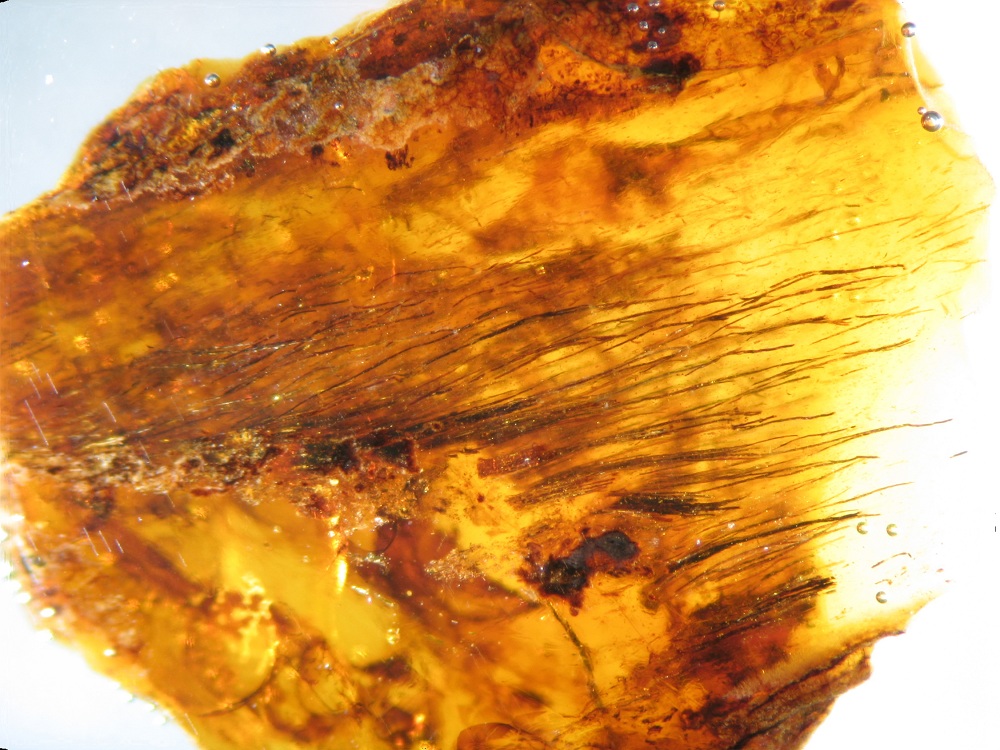
Numerous individual filaments in Late Cretaceous Canadian amber. These filaments are similar to the protofeathers that have been found as fossils with some dinosaurs. These filaments range from clear to near-black.
Coiled For Diving
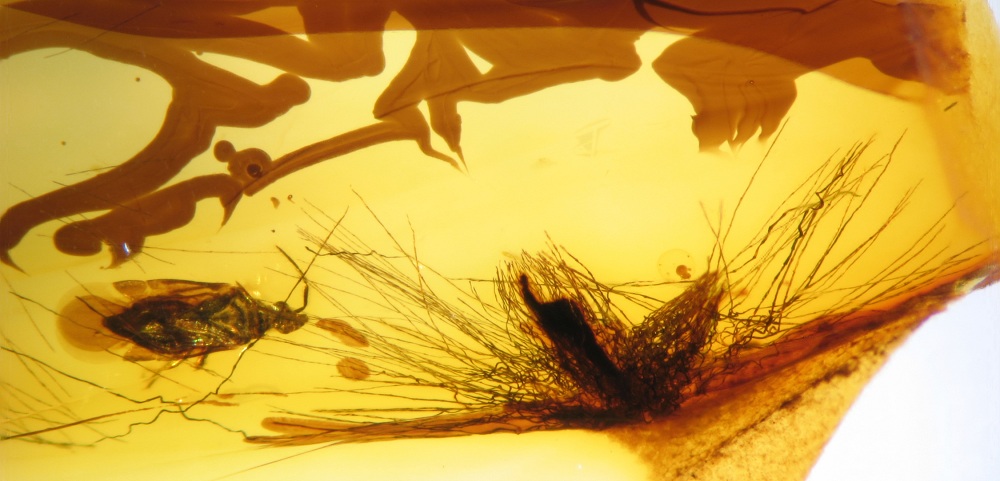
A feather accompanied by a microphysid plant bug. The coiling observed in the feather is directly comparable to coils found in modern bird feathers specialized for water uptake and are suggestive of diving behavior, but similar structures can be used to transport water to the nest.
Brown Feathers
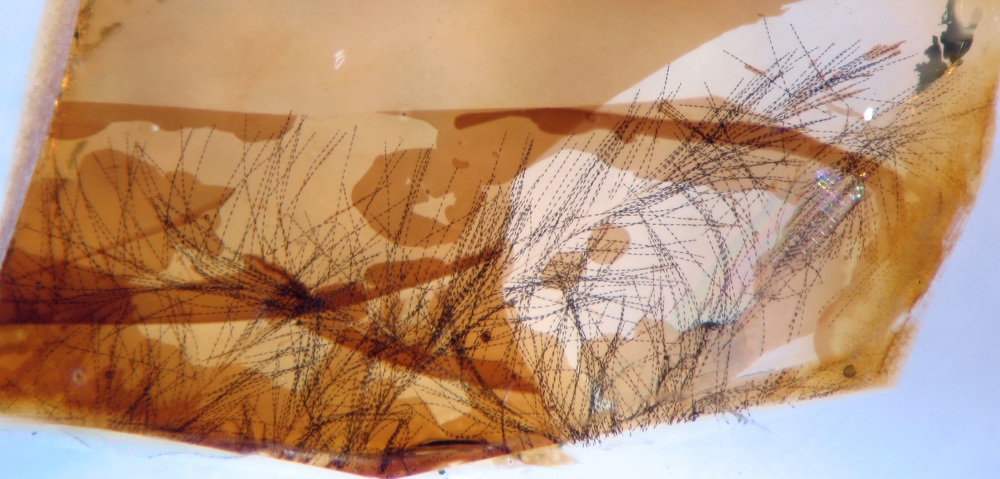
Pigmentation in these feathers gives it a beaded appearance. Pigment in the feather suggests it would have been medium- or dark-brown in color.
Curly Coils

The cork-screw shaped structures in the image are the tightly coiled bases of feather barbules.
Modern Equivalent
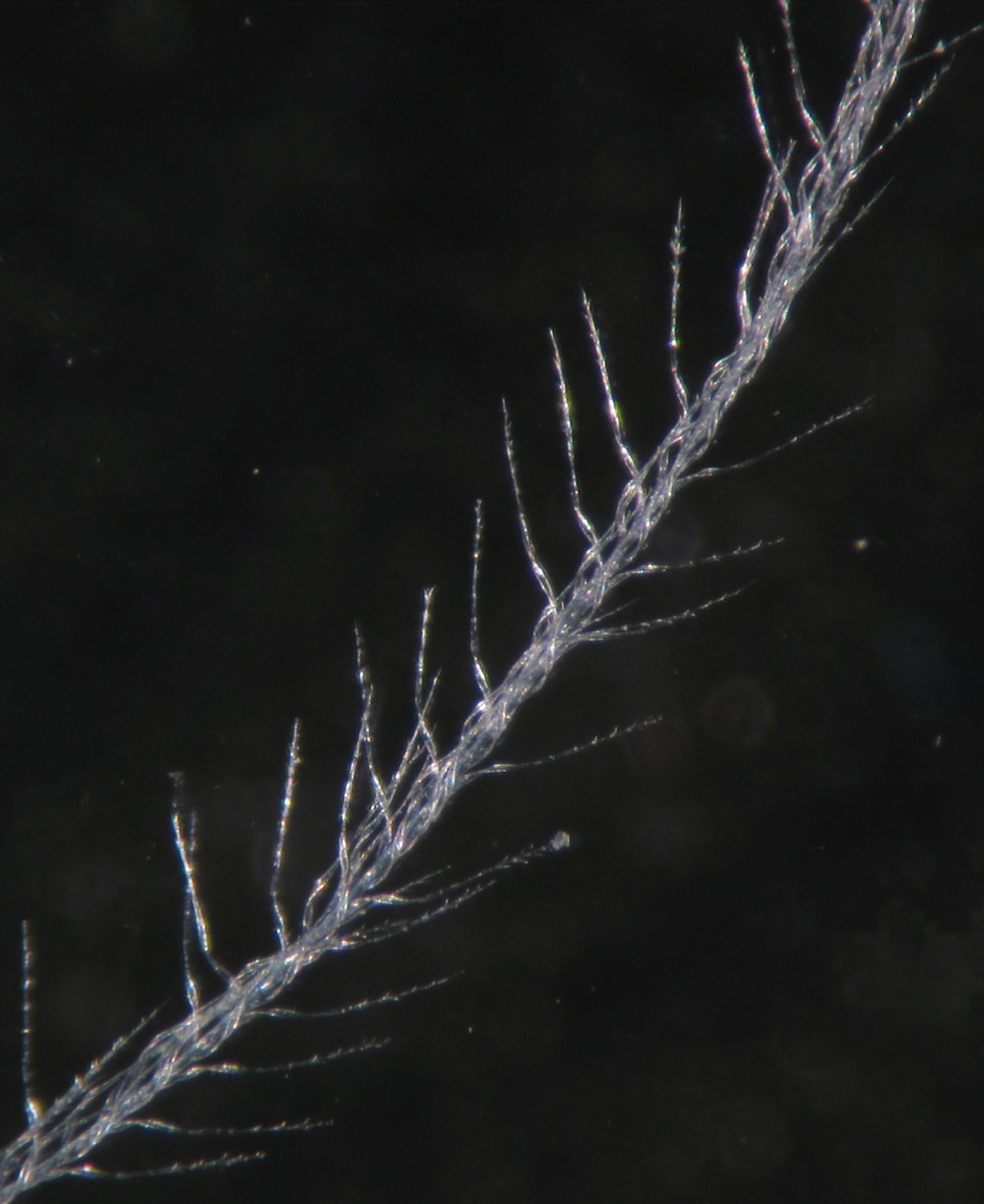
An isolated barb from a white belly feather of a modern grebe (Aechmophorus occidentalis), illustrating coiled barbule bases comparable to those in the Cretaceous specimen. In both cases, the coiling is a structural adaptation that allows the feather to absorb water.
Color-Producing Cells

A feather barb that shows some indication of original coloration. The oblong brown masses within the image are regions of color within the barbules. In this specimen, the overall feather color appears to have been medium- or dark-brown.
Get the world’s most fascinating discoveries delivered straight to your inbox.
A clear example
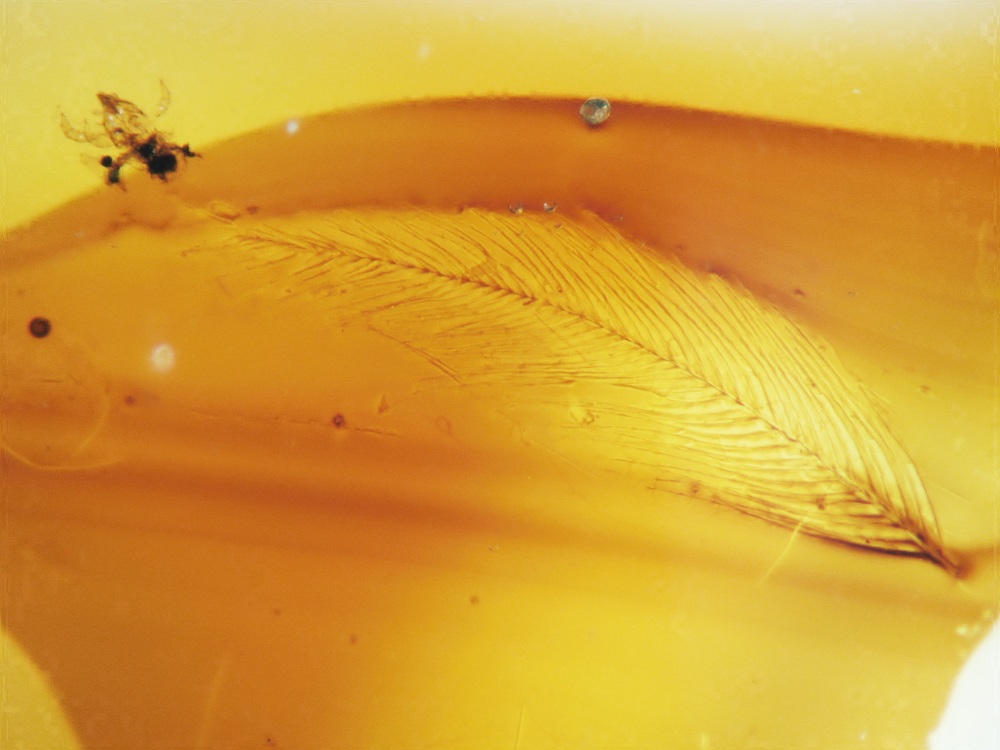
An isolated, unpigmented feather barb and a mite preserved in Canadian Late Cretaceous amber.
Simple Pigments

Overview of 6 pigmented feather barbs.
Pigmented Feathers
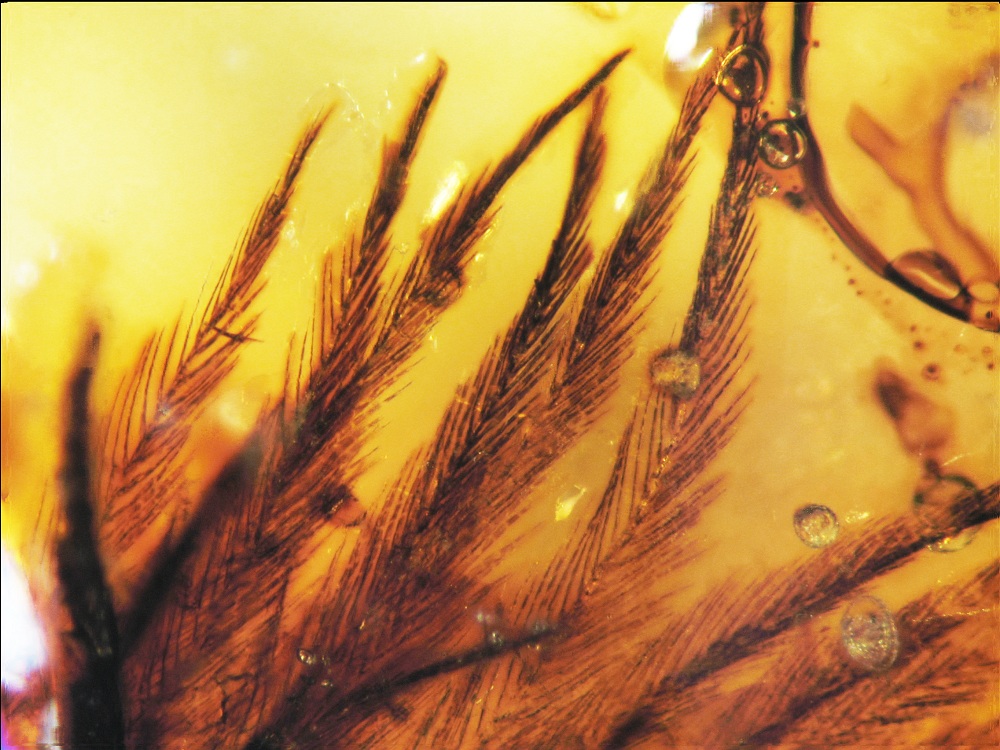
Overview of 16 clumped feather barbs
Jennifer Welsh is a Connecticut-based science writer and editor and a regular contributor to Live Science. She also has several years of bench work in cancer research and anti-viral drug discovery under her belt. She has previously written for Science News, VerywellHealth, The Scientist, Discover Magazine, WIRED Science, and Business Insider.

